Paul H. Siegel
Modeling Flash Memory Channels Using Conditional Generative Nets
Nov 19, 2021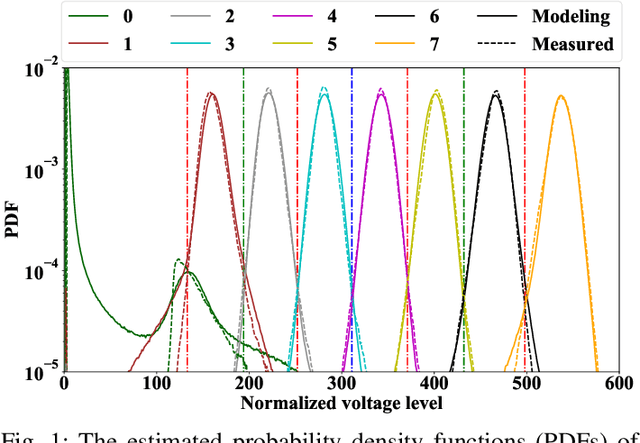
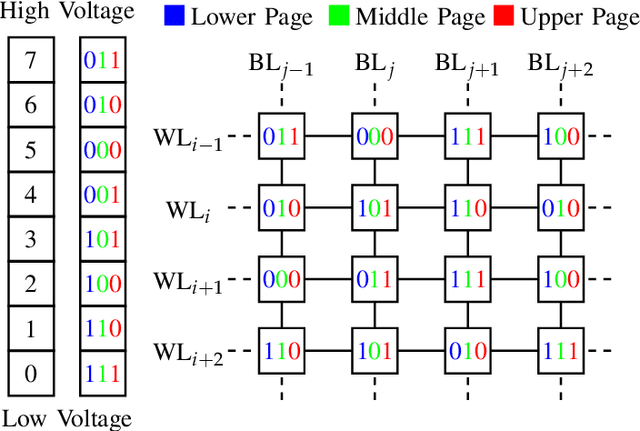
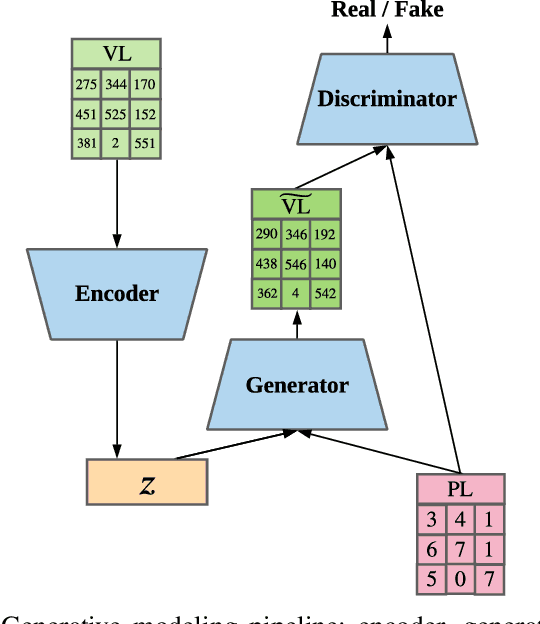
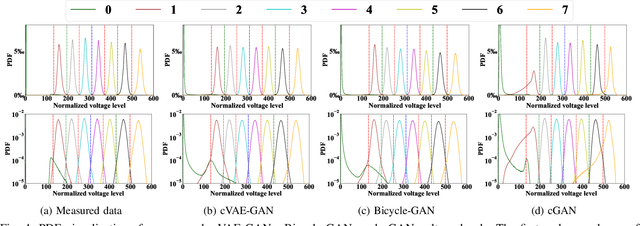
Abstract:Understanding the NAND flash memory channel has become more and more challenging due to the continually increasing density and the complex distortions arising from the write and read mechanisms. In this work, we propose a data-driven generative modeling method to characterize the flash memory channel. The learned model can reconstruct the read voltage from an individual memory cell based on the program levels of the cell and its surrounding array of cells. Experimental results show that the statistical distribution of the reconstructed read voltages accurately reflects the measured distribution on a commercial flash memory chip, both qualitatively and as quantified by the total variation distance. Moreover, we observe that the learned model can capture precise inter-cell interference (ICI) effects, as verified by comparison of the error probabilities of specific patterns in wordlines and bitlines.
PR-NN: RNN-based Detection for Coded Partial-Response Channels
Jul 30, 2020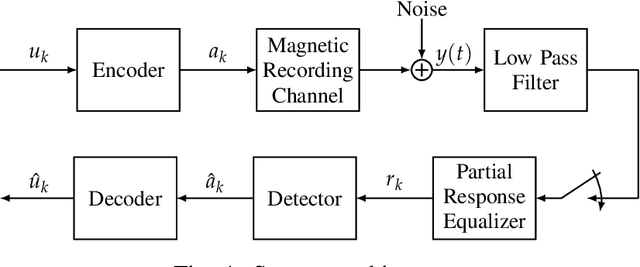
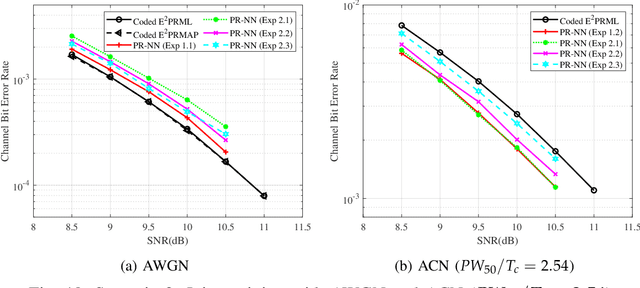
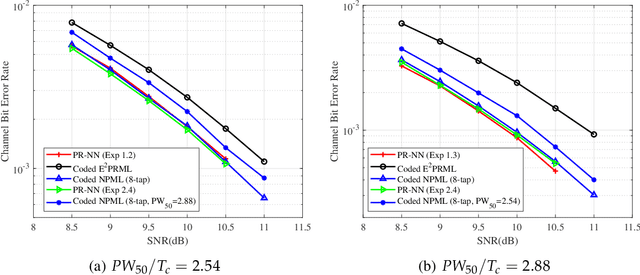
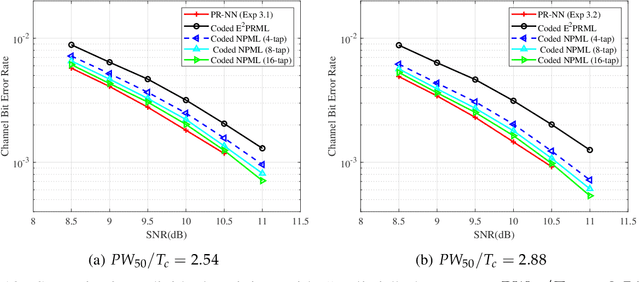
Abstract:In this paper, we investigate the use of recurrent neural network (RNN)-based detection of magnetic recording channels with inter-symbol interference (ISI). We refer to the proposed detection method, which is intended for recording channels with partial-response equalization, as Partial-Response Neural Network (PR-NN). We train bi-directional gated recurrent units (bi-GRUs) to recover the ISI channel inputs from noisy channel output sequences and evaluate the network performance when applied to continuous, streaming data. The computational complexity of PR-NN during the evaluation process is comparable to that of a Viterbi detector. The recording system on which the experiments were conducted uses a rate-2/3, (1,7) runlength-limited (RLL) code with an E2PR4 partial-response channel target. Experimental results with ideal PR signals show that the performance of PR-NN detection approaches that of Viterbi detection in additive white gaussian noise (AWGN). Moreover, the PR-NN detector outperforms Viterbi detection and achieves the performance of Noise-Predictive Maximum Likelihood (NPML) detection in additive colored noise (ACN) at different channel densities. A PR-NN detector trained with both AWGN and ACN maintains the performance observed under separate training. Similarly, when trained with ACN corresponding to two different channel densities, PR-NN maintains its performance at both densities. Experiments confirm that this robustness is consistent over a wide range of signal-to-noise ratios (SNRs). Finally, PR-NN displays robust performance when applied to a more realistic magnetic recording channel with MMSE-equalized Lorentzian signals.
 Add to Chrome
Add to Chrome Add to Firefox
Add to Firefox Add to Edge
Add to Edge